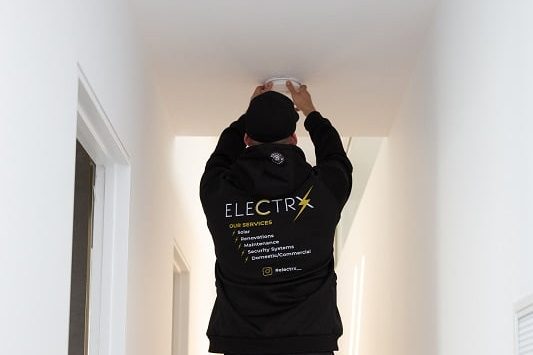Discover the Reasons for Smoke Alarm Beeping and Its Significance
Smoke alarms emit a beeping sound primarily to alert you to issues that require urgent attention. This may indicate a low battery, an expired sensor, or an internal malfunction. Even smoke alarms that are hardwired into your property can emit chirps to signal a problem, even if they seem to function correctly. This sound serves as a critical warning that your smoke alarm may not be adequately protecting your family against fire hazards until the situation is rectified or the unit is replaced. It’s essential to respond swiftly to these alerts to ensure your home remains safeguarded against potential fire dangers.

Deciphering the Messages Behind Smoke Alarm Chirping Sounds
When a smoke alarm is persistently chirping, it transcends mere annoyance; it conveys a crucial message regarding its operational state. Whether you hear a high-pitched chirp every 30 seconds or an unexpected warning sound in the dead of night, this ongoing beeping signifies that an urgent issue requires your immediate attention. In numerous households, the incessant chirping often serves as the first indication that the smoke alarm is malfunctioning. Neglecting these sounds can result in dire consequences, making it imperative to grasp their significance and take appropriate measures to rectify the situation.
Let’s explore in-depth the various reasons this might occur, the actions you can take to resolve these issues, and when it may be necessary to enlist the help of a professional for assistance.
Distinguishing Between Beeping and Full Alarm Sounds for Enhanced Safety
It is vital to differentiate that a beep, characterised by a brief chirp every 30 to 60 seconds, acts as a warning signal. Conversely, a full alarm produces a continuous, loud sound, indicating that the smoke alarm has detected smoke or fire in the vicinity. If you are hearing the beep but do not see any signs of smoke or fire, this guide will provide you with the essential information needed to effectively address the issue at hand.
Essential Steps to Take When Your Smoke Alarm Begins Beeping
Here’s a simple checklist to follow when your smoke alarm starts beeping:
- Replace the battery: If your smoke alarm operates on batteries or is a hybrid model, ensure you utilise high-quality batteries for replacement to guarantee peak performance.
- Vacuum the unit: Gently vacuuming the smoke alarm can efficiently remove any dust or insects that may be causing operational issues.
- Press the test button: Hold the test button for 5 seconds; it should emit a loud beep indicating it is functioning correctly before stopping.
- Check the expiry date: If your smoke alarm is over 10 years old, it may be time for a replacement to ensure continuous safety.
- Look for a fault light: Many smoke alarm models are designed with a red light for battery issues or a yellow light indicating sensor faults.
If the beeping persists after implementing these steps, it’s advisable to consult with a licensed electrician. You can conveniently schedule our services via our Smoke Alarm Services page or call us directly at 0488 812 237.
Identifying Common Causes for Smoke Alarm Beeping
1. Low Battery Alerts from Smoke Alarms
Even hardwired smoke alarms are equipped with a backup battery to ensure they function during power outages. When this backup battery is running low, the unit emits a beeping sound to alert you of the situation. This is the most frequent reason for a smoke alarm to chirp, and addressing this promptly can avert further complications and ensure that your home remains secure.
2. Recognising Expired Smoke Alarm Units
Most smoke alarms are designed to have a lifespan of approximately 10 years. After this time, the internal sensor may start to lose its reliability, causing many alarms to emit beeping sounds as a signal that they have reached their end-of-life. You can typically locate a sticker with the expiry date on the side or back of the unit, making it straightforward for you to determine when it’s time for a replacement to maintain fire safety.
3. Troubleshooting Power-Related Issues in Hardwired Models
For hardwired smoke alarms, problems such as a loose connection, tripped circuit breaker, or inadequate earthing can trigger a fault beep, even if the green power indicator light is illuminated. If you suspect power-related complications, it is essential to have a professional evaluate the situation to ensure your smoke alarm operates correctly and reliably.
4. Cleaning Dust and Insects from the Smoke Alarm
Accumulated dirt and dust within the sensing chamber of your smoke alarm can lead to confusion and may trigger false alarms. Additionally, a spider or other flying insects could interfere with the alarm's functionality. In such cases, a quick and gentle vacuuming of the unit using a soft brush attachment can often resolve the beeping issue without the need for further intervention.
5. Managing Humidity or Temperature Sensitivity Issues
Excessive humidity levels, such as steam from hot showers, or extreme temperature fluctuations can cause certain smoke alarm models to chirp or even trigger false alarms. To prevent these problems, it’s advisable to avoid installing smoke alarms near bathrooms or too close to kitchens where cooking activities and boiling water frequently occur. Ensuring correct placement is crucial for optimal smoke alarm performance.
Recognising When to Replace Your Smoke Alarm for Enhanced Safety
Smoke alarms should be replaced if any of the following conditions are present:
- They are more than 10 years old, indicating the end of their effective lifespan.
- The beeping continues even after you have replaced the battery.
- The alarm does not respond when you press the test button.
- You notice any physical damage, cracks, or water staining on the unit.
- You have experienced repeated false alarms or malfunctions.
Moreover, it’s essential to verify if your smoke alarm system complies with current Victorian safety standards. Most homes should be equipped with hardwired smoke alarms with battery backup installed in critical areas for enhanced safety and regulatory compliance.
For further safety information, you can refer to Fire Rescue Victoria’s dedicated smoke alarm page.
Comprehensive Smoke Alarm Inspection and Replacement Services for Your Peace of Mind
When you contact us for smoke alarm inspection or replacement services, we adhere to a meticulous process to ensure your safety:
- We conduct thorough tests on the smoke alarm unit and its power supply to confirm everything is functioning correctly.
- We check the expiry status and all connection points to ensure proper operation and safety.
- We meticulously clean the sensor and housing to eliminate any potential obstructions that may hinder functionality.
- We replace the battery if applicable, ensuring it meets high-quality standards for optimal performance.
- We remove outdated units and upgrade them as necessary to comply with current safety regulations.
- We install new alarms featuring 240V hardwiring and lithium backup batteries for enhanced reliability.
- We ensure that the positioning of alarms adheres to current recommendations for optimal safety and effectiveness.
All our work is certified with a Certificate of Electrical Safety, and we exclusively utilise smoke alarm models that comply with the regulations detailed in the Australian Standards register to guarantee your safety.
Frequently Asked Questions About Smoke Alarms Addressed
Is it necessary to hire an electrician for smoke alarm replacement?
Yes, enlisting a qualified electrician is crucial for the safe installation of smoke alarms, particularly if they are 240V hardwired units. While battery-operated alarms can typically be replaced by homeowners, any unit connected to mains power necessitates the expertise of a licensed professional to ensure compliance with safety standards and regulations.
What is the typical lifespan of smoke alarms?
Most smoke alarms are designed for a lifespan of approximately 10 years. Following this duration, the sensor's reliability can diminish, making timely replacement essential for maintaining fire safety in your home and ensuring that the alarm operates effectively.
What are the legal requirements for smoke alarms in Victoria?
All residences in Victoria must have smoke alarms that conform to the Building Code. New constructions and major renovations are required to have hardwired smoke alarms with battery backup for improved safety and compliance with current regulations.
Can I temporarily silence the beeping without resolving the issue?
Only for a short duration. Silencing the unit will not rectify the underlying problem, and the alarm will continue beeping or may fail completely until the issue is resolved. It is vital to take effective action immediately to ensure your home remains secure from fire hazards.
The Importance of Responding Promptly to Smoke Alarm Alerts
A beeping smoke alarm serves as your home’s way of signalling an urgent need for attention. While it may be tempting to ignore the sound or silence it by removing the battery, such actions can severely jeopardise your safety. Your smoke alarm could be your only line of defence against potential fire dangers, making it essential to respond to the beeping swiftly and effectively.
If your smoke alarm continues to beep despite your efforts, allow us to take care of the situation for you. We will conduct thorough cleaning, testing, or replacement of components as necessary, ensuring that your home remains adequately protected against fire risks and hazards.
The Article: Smoke Alarm Beeping? Discover What It Means and Solutions first appeared on https://writebuff.com
The Article Smoke Alarm Beeping? Understand Causes and Solutions Was Found On https://limitsofstrategy.com


It’s interesting how smoke alarms, although often taken for granted, play such a crucial role in home safety. The nuances of their beeping sounds can tell us a lot about their condition, and it really underscores the importance of being proactive about checking them regularly, not just when we hear a chirp. I remember a friend of mine ignored a persistent chirp for weeks, thinking it was just a low battery. Unfortunately, it turned out to be a sign of a faulty unit, and they discovered this when they had a small kitchen fire.